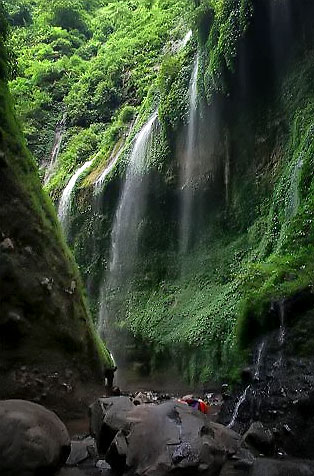Madakaripura

In around 1355 A.D. King Hayam Wuruk of Majapahit gave a small portion of land to his chief minister Gajah Mada. This land is believed to have included the now famous waterfall Mada Kari Pura near Mt Bromo.
According to ancient literary sources it was at Mada Kari Pura that Gajah Mada, the man who took Majapahit to the zenith of its power, is said to have made his vow of abstinence, the Palapa, and consolidated the first historic vision of a united Indonesia. For Indonesians then, and especially for Javanese, Mada Kari Pura can be seen as a place for spiritual renewal, a place to ponder on the great leader's effort of will and determination, symbolized by the Palapa, which has for more than 600 years been a motivating force for the people of East Java.
The spectacular waterfall lies hidden at the end of a deep valley in the foothills of the Tengger Range, not far from Sukapura. The valley walls meet to form an enormous 'sinkhole' more than 100 metres deep, into which water cascades from the dense forest above. Until recently, the site was virtually inaccessible to all but the most adventurous. Since 1989, however, a track has been cleared down to the river bed and guides from the nearby village of Sapih are available to lead visitors to the falls.
The best time to visit Mada Kari Pura is in the middle of the day, between 10 a.m. and 2 p.m., when the sun is high enough to light up the bottom of the valley. In fact, it is dangerous to walk to the falls after 3 p.m. since heavy rain in the late afternoon can cause sudden flash floods in the river.









